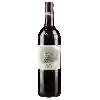
Winery La GuyennoiseCamerlin Haut Prevot
In the mouth this red wine is a powerful with a nice balance between acidity and tannins.
This wine generally goes well with poultry, beef or veal.
Taste structure of the Camerlin Haut Prevot from the Winery La Guyennoise
Light | Bold | |
Smooth | Tannic | |
Dry | Sweet | |
Soft | Acidic |
In the mouth the Camerlin Haut Prevot of Winery La Guyennoise in the region of Bordeaux is a powerful with a nice balance between acidity and tannins.
Food and wine pairings with Camerlin Haut Prevot
Pairings that work perfectly with Camerlin Haut Prevot
Original food and wine pairings with Camerlin Haut Prevot
The Camerlin Haut Prevot of Winery La Guyennoise matches generally quite well with dishes of beef, veal or game (deer, venison) such as recipes of barbecue burger, sauté of veal with carrots or duck legs with honey.
Details and technical informations about Winery La Guyennoise's Camerlin Haut Prevot.
Discover the grape variety: Gaillard 2
Interspecific cross between an othello-rupestris and the noah obtained in 1885 by Fernand Gaillard. In the 1960s, Gaillard 2 still represented nearly 4,000 hectares, particularly in the Centre-West and Burgundy regions. Today, it has practically disappeared.
Last vintages of this wine
The best vintages of Camerlin Haut Prevot from Winery La Guyennoise are 2011
Informations about the Winery La Guyennoise
The Winery La Guyennoise is one of wineries to follow in Bordeaux.. It offers 675 wines for sale in the of Bordeaux to come and discover on site or to buy online.
The wine region of Bordeaux
Bordeaux, in southwestern France, is one of the most famous, prestigious and prolific wine regions in the world. The majority of Bordeaux wines (nearly 90% of the production Volume) are the Dry, medium and Full-bodied red Bordeaux blends for which it is famous. The finest (and most expensive) are the wines of the great châteaux of Haut-Médoc and the right bank appellations of Saint-Émilion and Pomerol. The former focuses (at the highest level) on Cabernet Sauvignon, the latter on Merlot.
The word of the wine: Chaptalization
The addition of sugar at the time of fermentation of the must, an ancient practice, but theorized by Jean-Antoine Chaptal at the dawn of the 19th century. The sugar is transformed into alcohol and allows the natural degree of the wine to be raised in a weak or cold year, or - more questionably - when the winegrower has a harvest that is too large to obtain good maturity.














